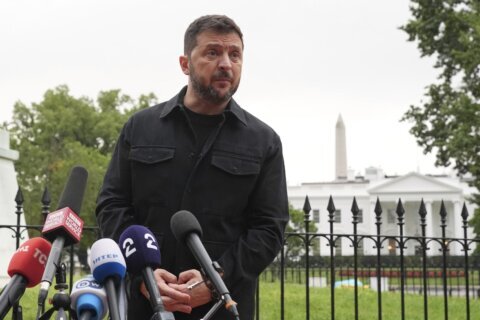Valets that work for the U.S. president are part of the White House Military Office (WHMO). Each WHMO operates slightly differently, depending on the preferences of the current administration.
Emmett Beliveau, former WHMO director during the Obama administration, said it’s a 2,500-person operation made up of mostly active-duty members of the military, and performs a wide range of duties.
Duties include military support for White House functions, including food service; presidential transportation; medical support; emergency medical services; and hospitality services.
Typically, there are several valets attending the president, providing a range of very personal service for the president and the first family. In the past, they have been responsible for preparing meals, handling the president’s clothing and personal effects in the White House.
“I can’t speak to current practice, but during my time there, the valets were among a very shortlist of people who had constant, very close contact with the first family,” Beliveau said. “The other people I would put on that list would be the physician to the president and the physician that was taking care of the first lady.”
When the president is traveling, valets manage the security and movement of the chief executive’s luggage and handling of their personal items. They make sure they are moved from Air Force One and set up in the hotel room where the president is staying.
On trips outside of D.C., “The valets would for sure stay in their own hotel room, but in very close proximity to the president, certainly on the same hotel floor as the president,” Beliveau said.
Despite the fact they spend long hours at the White House, “There is no facility for them to sleep at the White House. They commute back to wherever they are living in the capital area,” he said.
If, as is the case with one of President Donald Trump’s current valets, one of them becomes ill, Beliveau said precautions are taken to protect the president, the first family and staff.
“I don’t think we put them on leave, but we certainly want to isolate and quarantine any individual that had a communicable disease and quickly perform the contact tracing required to see who they’ve been in contact with.”
Beliveau recalled coming down with H1N1 himself in 2009.
“I think I was on a trip with the president in Chicago and thought I’d come down with the flu. The White House medical unit, because they’re there to take care of him, was very quickly able to come to my hotel room and give me a rapid test, get me on Tamiflu and take great care of me.”
The presidential valets and the many other members of the WHMO move seamlessly among the civilians at the White House without attracting attention.
On Wednesdays, however, as a matter of historical tradition, all the service personnel wear their uniforms, according to Beliveau, “to remind everyone that there is a massive military backbone that makes that place function.”
In fact, WHMO also plays an essential role in maintaining the continuity of the presidency, to make sure that the presidency is prepared for a wide range of threats from routine to catastrophic.
In that respect, their objective is to ensure the presidency survives in the event of what Beliveau called, “a very bad day.”








